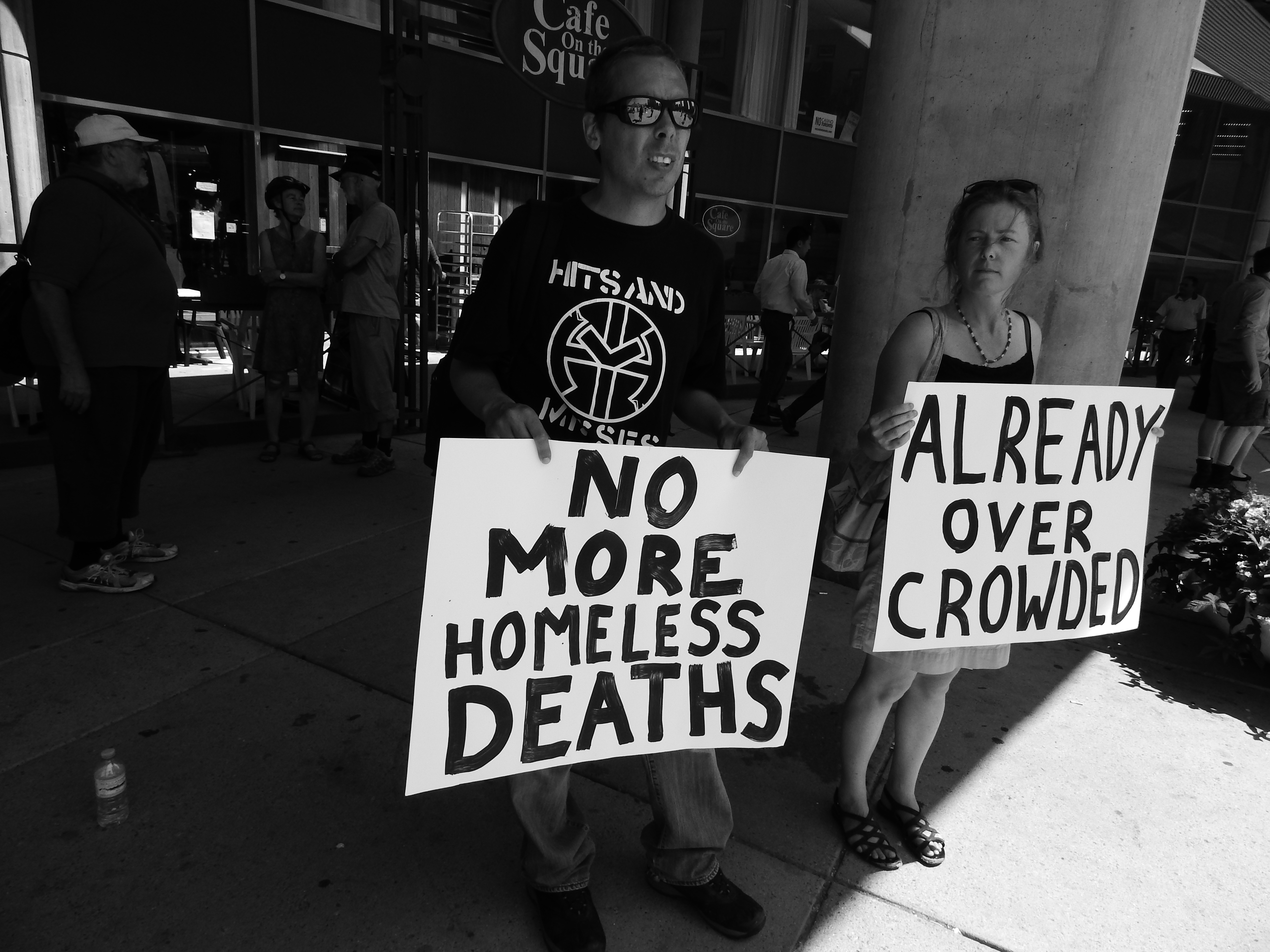They found him a place of his own. And he couldn’t be happier.
“They’re going head over heels for me,” said William Paton, a resident at Seaton House, the largest men’s shelter in Canada.
“They help you get a subsidized unit. They get you the furniture. Without that, nobody has that kind of opportunity.”
Seaton House is a 543 bed shelter in downtown Toronto that helps homeless men get their life back on track. Men with poor health, drug and alcohol problems or mental illness. Helping them gain new skills so they can find a job and eventually live in a place of their own.
But that’s all set to change.
“On July 3, the City of Toronto Executive Committee approved a proposal to move forward with a lofty re-development plan of Seaton House,” said the Ontario Coalition Against Poverty (OCAP) in a statement released on Tuesday.
“This plan, as it stands right now, includes a massive cut to services that are currently run out of Seaton House such as harm reduction programs, as well as a loss of over 400 emergency shelter beds, and quite possibly the loss of unionized public sector workers who deliver those services.”
Pushing more people onto the streets. Forcing them to sleep in parks, stairwells, ravines or hospital emergency rooms. Anywhere they can stay warm and dry.
“In the wintertime, if they got no place to stay I guess they’ll put a brick through a window or something like that just to go to jail so they can have a place to stay,” said Paton.
“(But) how are they going to have the support?”
The support they need to transition from homelessness to housing.
“I ended up in a situation and the Seaton House took me in,” said Paton. He’s been there for over six months.
“But now things have worked out.”
Without the help of Seaton House, the 58-year-old has no idea where he’d be right now. The shelter has given him the chance to rebuild his life. Save enough money for first and last month’s rent.
With all the services he needed under one roof. As opposed to being scattered all over the city.
“So (now) they’re going to give you a bus token to go to this shelter because they provide this one service,” said Paton.
“Then they’re going to tell you to go somewhere else (for other services).”
For an hour prior to Tuesday’s rally at City Hall, anti-poverty activists drew outlines of bodies on the concrete surface of Nathan Phillips Square. Outlines of people sleeping on the ground.
“To represent the hundreds of shelter beds that could potentially be cut in this Seaton House re-development proposal,” said OCAP organizer Liisa Schofield.
“Despite the fact that this past winter we were successful in pushing the city to agree that shelters should not be going over 90 per cent capacity. Despite the fact that shelters are packed full. That people are double and triple bunked.”
Based on the consultant’s report, the City Executive Committee recommended a re-development of Seaton House that “includes approximately 100 emergency shelter beds, in line with best practices, as well as a long-term care home (estimate based on 162 beds) and 24,000 square feet of space for community services.
“The consultant’s study only investigated preliminary massing options. The exact number of beds for both the emergency shelter and long-term care home as well as space for associated community services will be refined as more detailed plans are developed.”
Where are the rest supposed to go? Who is going to find housing for them?
“That’s the question that I would like to see answered,” said Victory, a street nurse in downtown Toronto.
For Victory and others, the answer they’d like to hear is a recommendation from the City that it will find housing for everyone before it considers closing more shelter beds.




